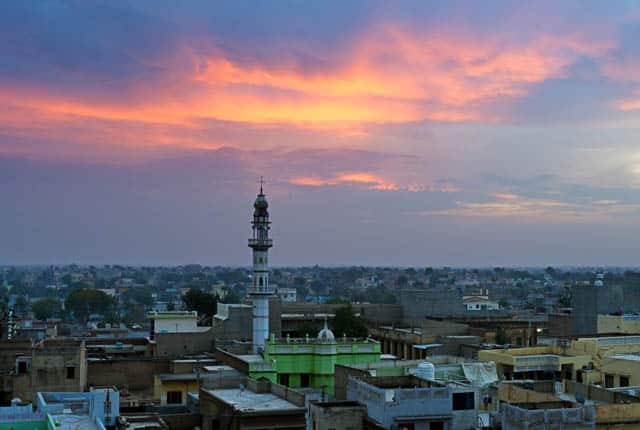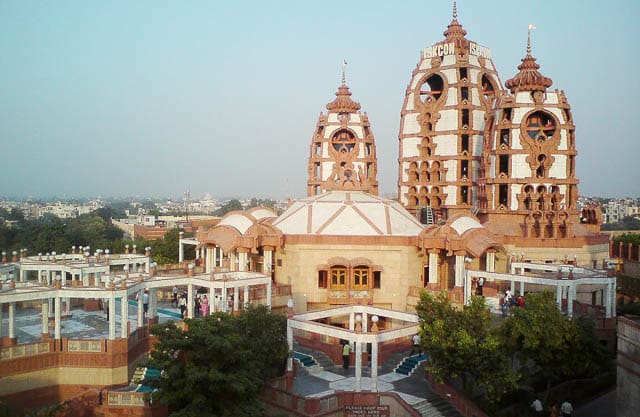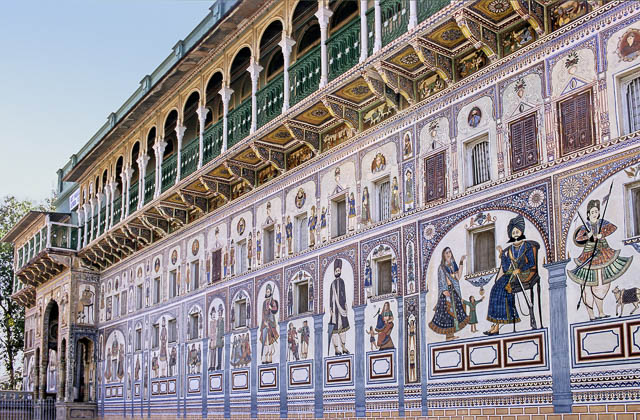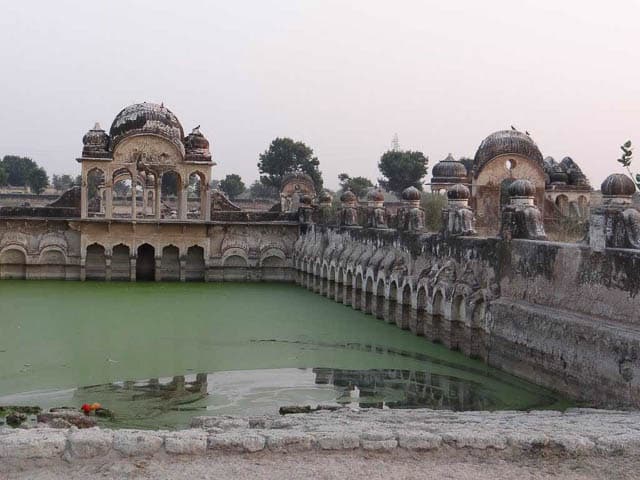About
Top Experiences
Type of Journey
Subscribe to newsletter and stay updated
Read about our travel expeditions, new destinations, new pictures, latest trip schedules
Shekhawati is an arid desert zone in Northeastern Rajasthan. It falls under the Sikar, Jhunjhunu regions, and parts of Churu, Nagaur, and Jaipur. It is a hotspot for those who want to take a peek into India’s rich cultural heritage and its art—the gorgeous architecture of Shekhawati is adorned with beautiful fresco paintings, giving it the name the “open-air art gallery.” The architectural structures you will get to see include Havelis (mansions), Bawadi (step wells), Dharamshalas (charitable inns), Chhatris (cenotaph), and Forts, built by the Shekhawat Rajput rulers and Marwari community. These are painted in traditional yet contemporary images ranging from Hindu Gods to the elements of the British Raj to mundane subjects like trains and telephones. Many of the Shekhawati Havelis and forts have now been converted into hotels and guesthouses. The Shekhawati region in Rajasthan is known for its sculptures, handicrafts, and most importantly, its fresco paintings on the walls of Havelis and historical buildings. It has the largest concentration of wall painted mansions, forts, cenotaphs, and mansions in the country and the most extensive collection of murals in the world. The Shekhawati is also an important historical location in India that has been mentioned in ancient texts such as the Mahabharata and the Vedas. These sacred texts are also believed to have been written in this region. Some of the most important sites to visit are Nawalgarh, Mandawa, Jhunjhunu, Churu, Dundlod, Mukundgarh, Alsisar, and Tal Chhapar Sanctuary. Overall, it is an enriching trip to add to your bucket list.
OVERVIEW
Location: Rajasthan
Nearest Airport: Jaipur
How to reach: by air/road/train
Famous for: Frescoes, Havelis & Forts
Best time to visit: October to March
WHAT TO SEE
Nawalgarh, Mandawa, Jhunjhunu
Churu, Dundlod, Mukundgarh
Alsisar, Tal Chhapar Sanctuary
Fatehpur
Sikar
History
Shekhawati gets its name from the Shekhawat Rajputs that used to rule the area. It was founded by MahaRao Shekha Ji who was born in the Amber-Jaipur territory which was under the Kachhawaha rulers although he later broke away from the rule. The term Shekhawati was even derived from his name—in the local language, Shekhawati translates to the “garden of MahaRao”. The Rajputs have ruled the region for over 500 years and thus have made a significant contribution to its art, architecture, and cultural heritage, covering the forts and mansions in paintings and frescoes to proclaim their rule and power in the region. Shekhawati was also an important trading and commercial region. However, this did not last very long due to the overtaking of trades by the British East India Company in the 19th century. That has changed, and many of the big names in Indian commerce come from the Marwari community of the Marwar area in Shekhawati.

The Shekhawati people are said to be the descendants of MahaRao Shekha Ji, i.e., the Shekhawat Rajputs. The local people are known for their colorful attire. Both men and women wear colorful traditional clothes and neatly tied turbans. They are mainly occupied in agriculture as well as various trades, both big and small—Birlas, Khaitans, Modis, Mittals, Dalamias, and Rungtas are a few of the well-known names in the business that hail from theMarwaricommunity of this region. The region is also one of the biggest contributors to the Indian military, so it acquired the name Veer Bhoomi or the “Land of the Braves.” As of late, it has become a booming spot for tourism, and the Shekhawati people are more than happy to extend their warm welcome and hospitality to visitors from all over the world. Their motto, Padharo Mhare Desh, which means”Guests, you are welcome in our land” is religiously followed by the local people.

Frescoes
The fresco paintings were made by artists who were called chiteras, who belonged to the kumhars(potters) caste. They were bright and colorful depictions of Shekhawati culture made using only natural colors. They were supported financially and patronized by the Shekhawat Rajputs, and later by the wealthy businessmen from the Marwar region. Besides the stunning visual beauty, the frescoes are important documentation of the history and traditions of the land and its people. They have turned out to be an authentic source and window into the lives of the Shekhawat locals. During the British Raj, it took on a new contemporary form which created a fusion of western styles and eastern mythologies and traditions, even painting mundane scenes from those days such as cars, and foreigners. The colors were also replaced by chemical ones from Europe and the artists picked up new techniques such as oleograph (oil paintings created from stone or metal plate impressions).

Some of the Important Places of Interest
There are plenty of places to visit to see the ornate architecture ofShekhawatiHavelisand the gorgeous frescoes in the Shekhawati region in Rajasthan. Here are our top picks.
Nawalgarh –This is a brilliant spot with hundreds of paintedShekhawatiHavelisand colorful bazaars and forts.The most important Havelis includeBansidhar Bhagat Haveli,theAath Haveli complex, Jodhraj Patodia Haveli, andChokhani Haveli. The Dr. Ramnath A Podar Haveli Museum and the Morarka Haveli Museum are two museums that exhibit vibrant murals.
Mandawa –It is a small town market with a rural Rajasthani village ambiance and decoratedShekhawatiHavelisby the dozens. It also has a fort-turned hotel and the Mandawa Castle, which is perfect for getting a panoramic view of the town. You can also find outstanding and affordable accommodation options in Mandawa.
Jhunjhunu –It was the old capital and also one of the largest towns in the region. It is located in the north and has many painted Shekhawati Havelis. It even has an old palace and temples, but it lacks the old world charm of the more rural and smaller towns.
Churu –Churu is known for its luxury Shekhawati Havelis and forts in the typical architecture of Rajasthan. The fresco paintings on the Haveli walls depict the story of warriors and heroes. It is located about 82 km from Shekhawati.

Dundlod –It is located near the south of Mandawa and Nawalgarh, and has a smaller number of Shekhawati Havelis with an impressive collection of murals. Dundlod also has an old fort called the Dundlod Fort in the center.
Mukundgarh –Mukundgarh is an 18th-century town and is known for its artisanal handicrafts and is a renowned craft center. It houses one of the biggest Shekhawati Havelis in the region as well as an old fort showcasing frescoes, murals, wooden furniture, dating back to the 17 and 18th centuries.
Alsisar –Alsisar is located in the Jhunjhunu district in the northernmost tip of Shekhawati. Established in the late 18th century, Alsisar is known for its painted Shekhawati Havelis, and its wells and reservoirs embellished with ornamental Rajasthani style of architecture. It is a region worth checking out.
Tal Chhapar Sanctuary –The Tal Chhapar Sanctuary is a wildlife sanctuary located in the Churu district of the Shekhawati region. It is most known for its blackbucks and a wide variety of predatory bird species.